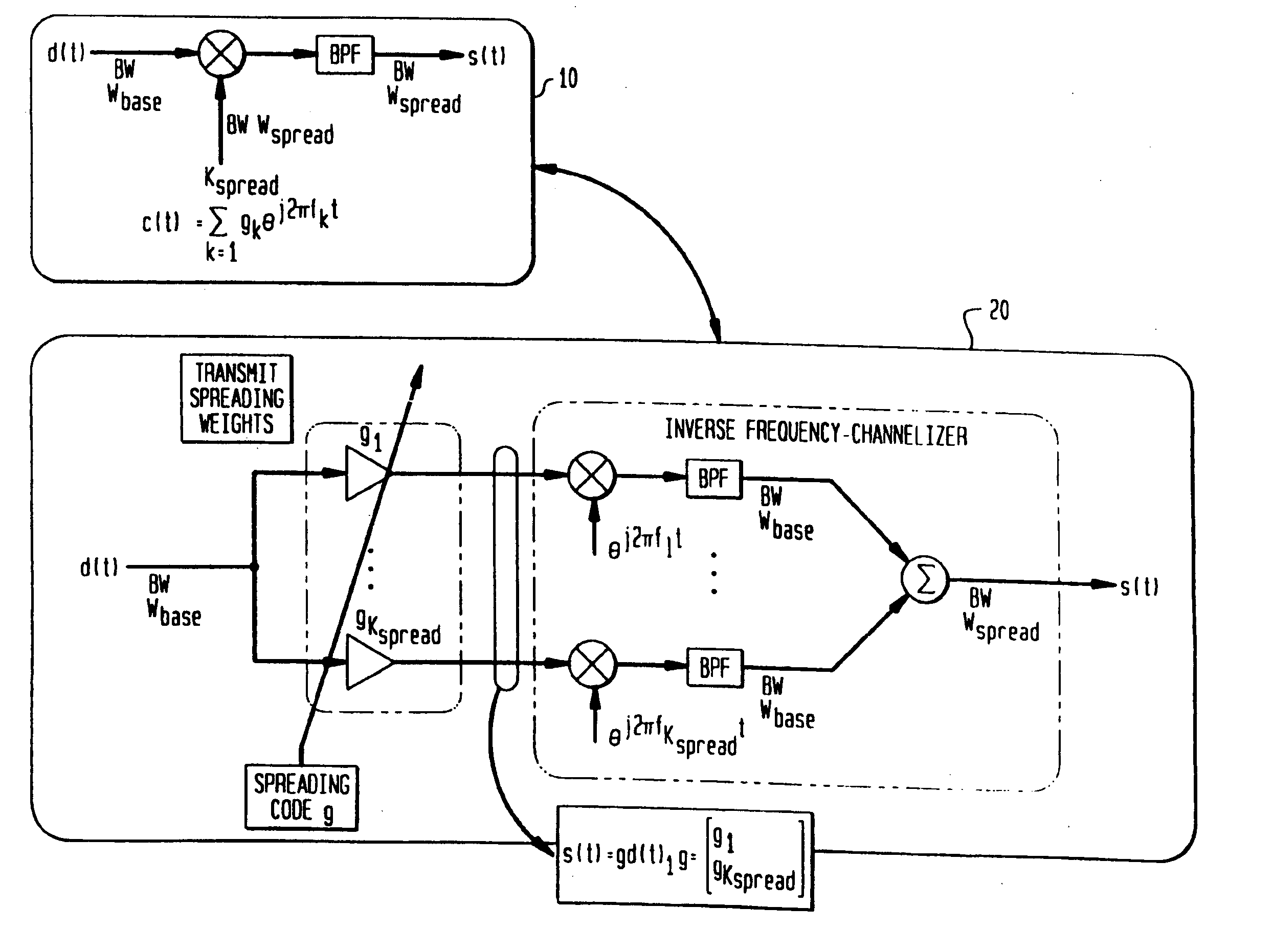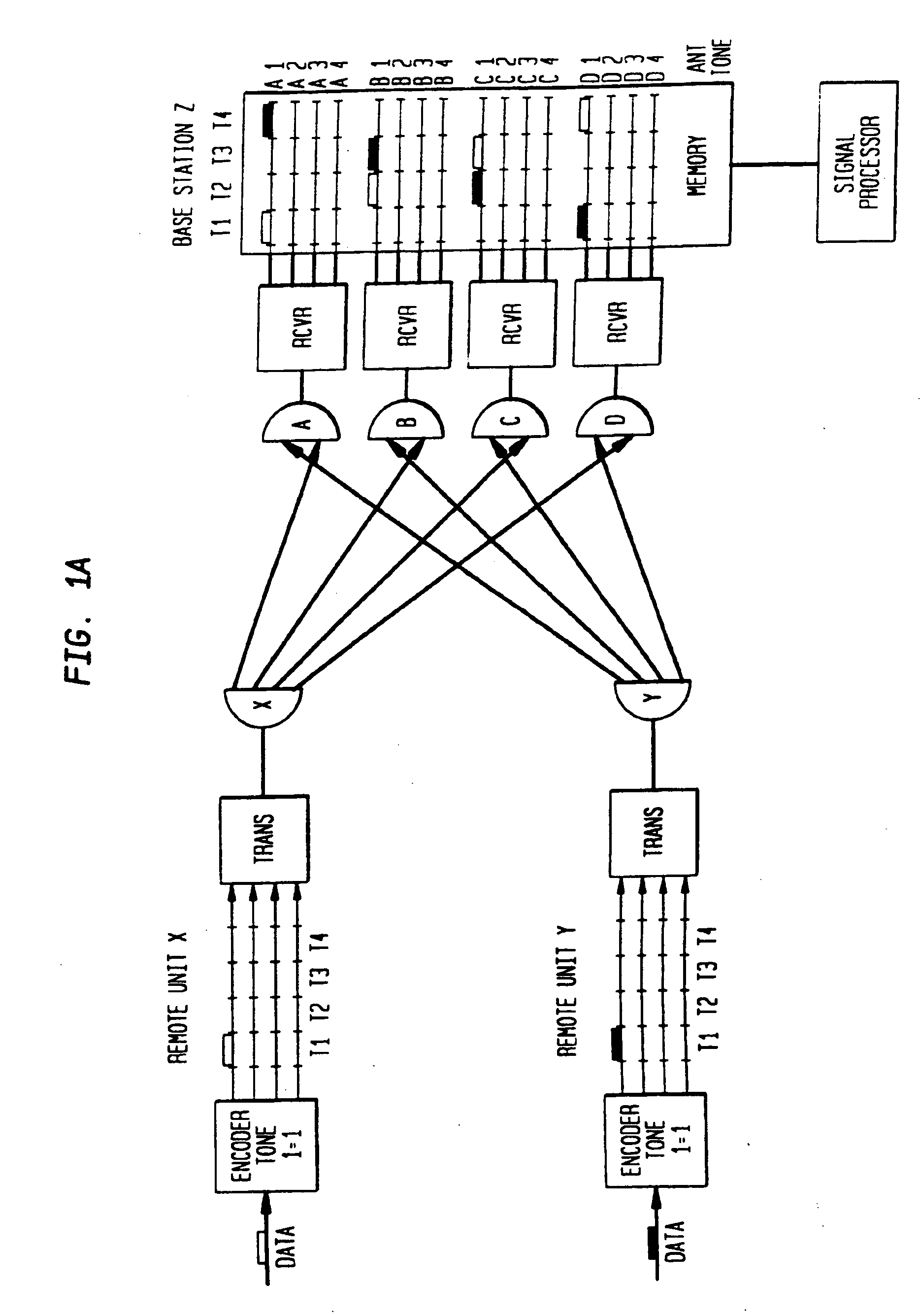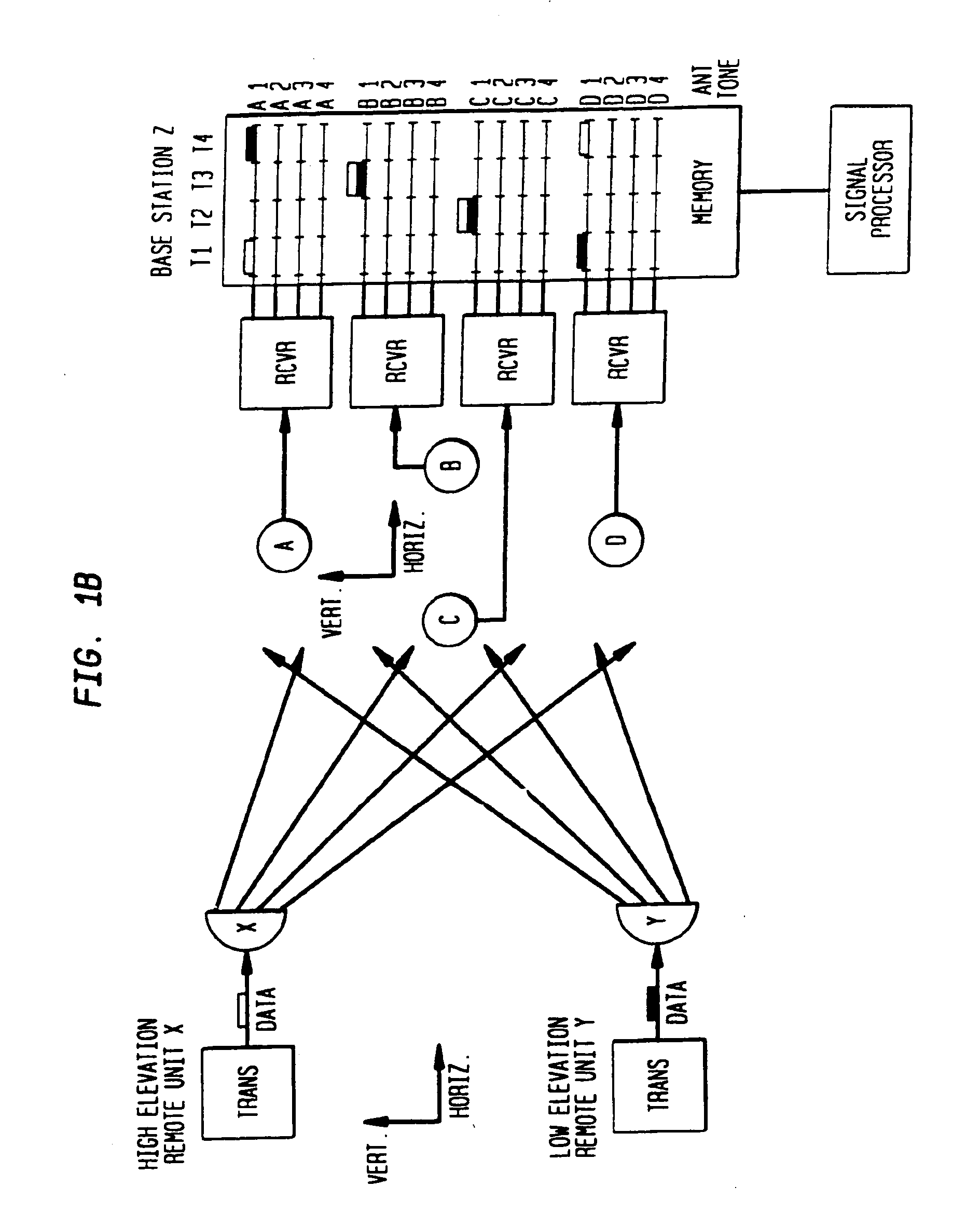Vertical adaptive antenna array for a discrete multitone spread spectrum communications system
- Summary
- Abstract
- Description
- Claims
- Application Information
AI Technical Summary
Benefits of technology
Problems solved by technology
Method used
Image
Examples
Embodiment Construction
The invention is a highly bandwidth-efficient communications method to enable vertical and horizontal receive beam steering, that includes the following steps. The base station receives a first spread signal at a base station having a multi-subarray antenna array with a first plurality of antenna elements arranged in a spaced vertical direction and a second plurality of subarray elements arranged in a spaced horizontal direction. The first spread signal comprises a first data signal spread over a plurality of discrete tones in accordance with a remote spreading code assigned to a remote unit for a first time period. The base station adaptively despreads the received signal by using first despreading codes that are based on the characteristics of the received signals at the first plurality of subarrays of the array. The vertical displacement of the subarrays enables the base station to perform vertical, receive beam steering. In addition, the base station adaptively despreads the si...
PUM
 Login to View More
Login to View More Abstract
Description
Claims
Application Information
 Login to View More
Login to View More - R&D
- Intellectual Property
- Life Sciences
- Materials
- Tech Scout
- Unparalleled Data Quality
- Higher Quality Content
- 60% Fewer Hallucinations
Browse by: Latest US Patents, China's latest patents, Technical Efficacy Thesaurus, Application Domain, Technology Topic, Popular Technical Reports.
© 2025 PatSnap. All rights reserved.Legal|Privacy policy|Modern Slavery Act Transparency Statement|Sitemap|About US| Contact US: help@patsnap.com



